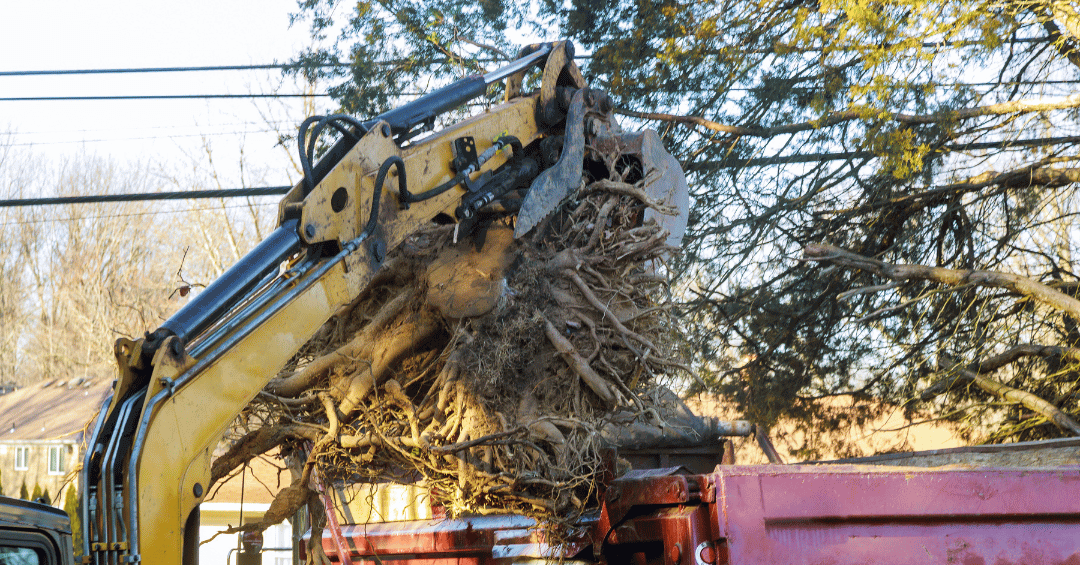A yard full of weeds can be frustrating, especially when you’ve worked hard to maintain a lush, green lawn. Weeds can choke your grass, take nutrients away from your plants, and leave your yard looking untidy. If you're wondering about the best way to get rid of a yard full of weeds, you’ve come to the right place. In this article, we’ll explore various effective methods to tackle those pesky invaders and restore your lawn to its former glory. Here are some of the best solutions, from natural remedies to professional techniques.
1. Dig Weeds Out
Sometimes, the old-fashioned way is the best. Digging weeds out, particularly deep-rooted ones like dandelions ensures that you remove the entire plant, root and all. You can use a hand trowel or weed puller for small areas or a spade for larger sections. This method prevents the weeds from growing back quickly.
2. Adjust Your Mowing Routine
Your mowing habits play a significant role in weed prevention. Keeping your grass longer (about 3 to 4 inches) can shade the soil and make it more difficult for weeds to thrive. Taller grass also develops stronger roots, giving it a better chance to outcompete weeds.
3. Avoid Watering Weeds
When you water your lawn, try to avoid watering areas where weeds are present. Overwatering can encourage weed growth. Instead, water deeply but less frequently to promote healthy grass growth while starving weeds of the water they need to spread.
4. Invest in Mulch for Your Garden Beds
Mulch is a great way to prevent weeds in flower beds and around trees. By covering the soil, you block sunlight, which prevents weed seeds from germinating. Organic mulch, like wood chips or straw, not only suppresses weeds but also adds nutrients to the soil as it decomposes.
5. Spraying Bindweed with Glyphosate
Due to its aggressive growth, bindweed can be particularly troublesome. Applying glyphosate directly to the leaves of bindweed can help eliminate it. However, be cautious when using this herbicide around other plants, as it can kill anything it touches.
6. Apply Soil Amendments to Strengthen Your Lawn
Healthy soil is key to a weed-free lawn. Consider applying soil amendments, like compost or lime, to improve the soil structure and nutrient content. Strong, healthy grass will naturally choke out many types of weeds.
7. Dethatch Your Lawn
Excess thatch (a layer of dead grass, roots, and debris) can create a breeding ground for weeds. Dethatching your lawn in the spring or fall can help remove this layer, allowing air, water, and nutrients to reach the soil, strengthening your grass, and weakening weed growth.
8. Pull Weeds Regularly
It’s essential to keep up with weeding. Pulling weeds as soon as you spot them can prevent them from spreading seeds and taking over your yard. Always pull them out by the root to prevent regrowth.
9. Use a Weedeater for Quick Removal
A weedeater can be a handy tool for larger areas or weeds growing along fences and hard-to-reach places. While it doesn’t kill the weeds at the root, it does provide temporary relief by cutting them down, making your yard look cleaner.
10. Aerate Your Lawn
A well-aerated lawn promotes healthy grass growth, which naturally suppresses weeds. Weeds often thrive in compacted soil, so aerating your lawn can break up the soil and improve air and water flow to your grassroots. This creates a stronger lawn that can outcompete weeds.
11. Use Herbicides
Herbicides can be a good option for large infestations. There are selective herbicides that target weeds without harming your grass and non-selective herbicides that kill everything. Spraying them with glyphosate can be an effective option for tough weeds like bindweed. However, due to their environmental impact, always follow the manufacturer’s instructions and use herbicides as a last resort.
12. Vinegar
Vinegar is a great natural weed killer. Its high acidity level damages the plant, leading to its death. You can mix vinegar with water and a bit of dish soap for better adhesion and spray it directly onto the weeds. Like boiling water, be careful when using vinegar near desirable plants as it can harm them as well.
13. Target the Gaps
Weeds that grow between paving stones or cracks in your driveway can be particularly stubborn. For these areas, boiling water, vinegar, or a propane torch can be highly effective. Using a weed torch to burn the weeds is a quick and efficient method, but make sure you follow safety guidelines.
14. Corn Gluten Meal
Corn gluten meal can prevent weed seeds from germinating, making it an excellent pre-emergent solution. While it won’t kill existing weeds, it can stop new ones from sprouting. Apply it in early spring to get ahead of the weed growth season.
15. Plant New Grass to Fill in Bare Spots
If your lawn has bare spots, weeds will likely fill them in. Seeding new grass in these areas can help create a dense turf that crowds out weeds. Choose a grass variety that suits your local climate and soil type for the best results.
16. Rake and Till for a Fresh Start
If your yard is overrun with weeds, sometimes it’s best to start fresh. Rake and till the soil to remove all plant material, then reseed or sod the area. This method works well for severe weed infestations.
17. Use a Preemergent to Stop Weed Seeds
A preemergent herbicide prevents weed seeds from germinating. Apply it in the early spring to stop weeds before they even start. Preemergents are especially effective on annual weeds like crabgrass.
18. Boiling Water
One of the easiest ways to kill weeds is by pouring boiling water directly on them. This method works exceptionally well for weeds growing in cracks in pavement or pathways. The heat scorches the weeds, killing them at the root. While effective, this method can harm nearby plants, so use caution when applying.
19. Propane Torch for Stubborn Weeds
A propane weed torch is another tool for eliminating weeds under challenging areas, such as walkways or patios. The heat from the torch destroys the plant cells, causing the weed to die. As with any open flame, follow safety procedures when using this method.
Contact Strobert Tree Services
Managing a yard full of weeds can be overwhelming, but you don’t have to go it alone. At Strobert Tree Services, we’re here to help. Our team can recommend the best course of action to restore it to a healthy, weed-free state. We also offer free health assessments to ensure your trees and other plants thrive alongside your lawn.
Take control of your yard today—contact Strobert Tree Services for professional help with weed control and lawn care!











